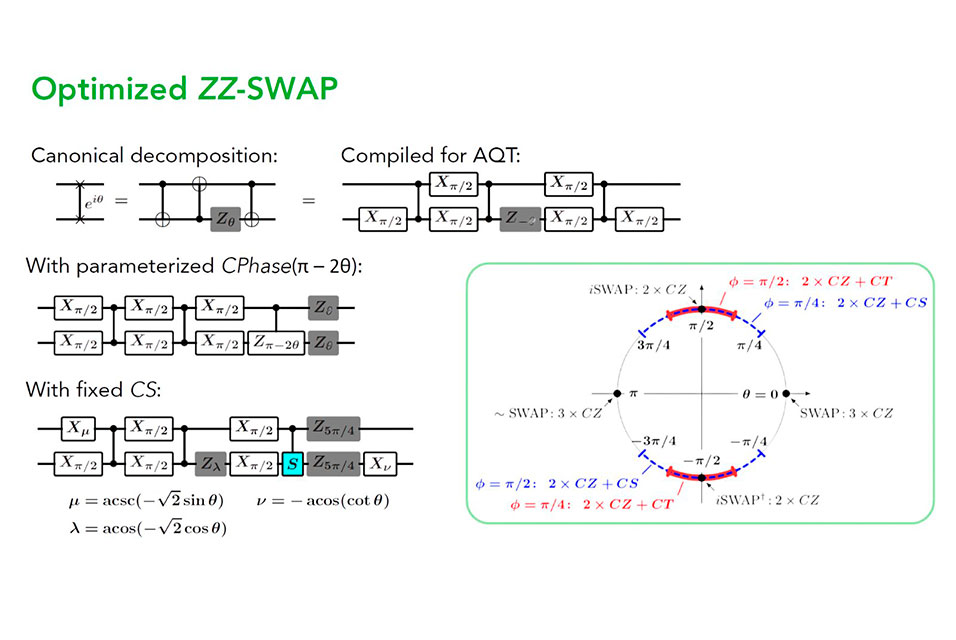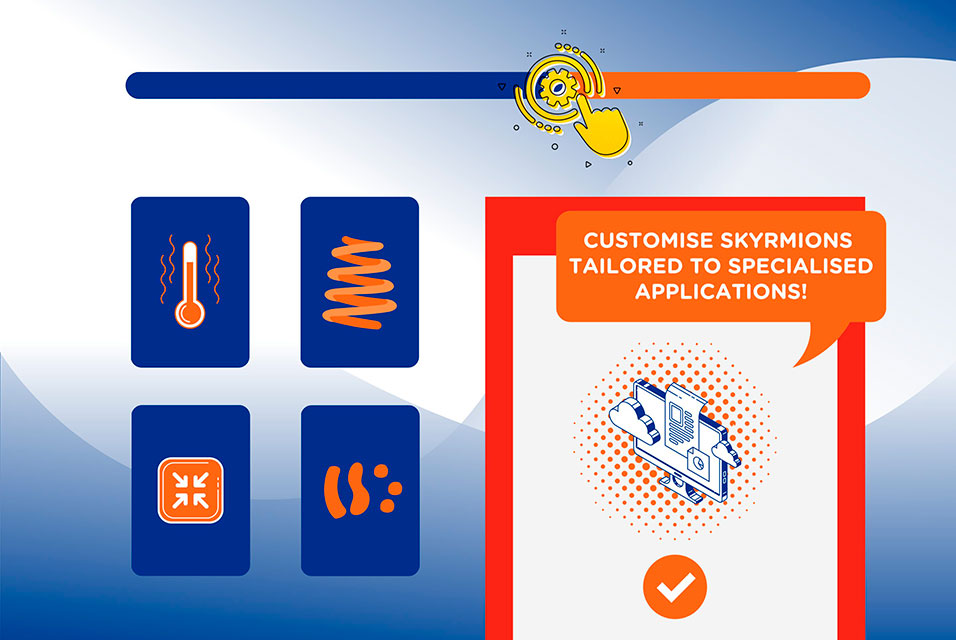BERKELEY, CA.- A research partnership at the Advanced Quantum Testbed (AQT) at
Lawrence Berkeley National Laboratory and Chicago-based Super.tech (acquired by ColdQuanta in May 2022) demonstrated how to optimize the execution of the ZZ SWAP network protocol, important to quantum computing. The team also introduced a new technique for quantum error mitigation that will improve the network protocol's implementation in quantum processors. The experimental data was published this July in Physical Review Research, adding more pathways in the near term to implement quantum algorithms using gate-based quantum computing.
A smart compiler for superconducting quantum hardware
Quantum processors with two- or three-dimensional architectures have limited qubit connectivity where each qubit interacts with only a limited number of other qubits. Furthermore, each qubit's information can only exist for so long before noise and errors cause decoherence, limiting the runtime and fidelity of quantum algorithms. Therefore, when designing and executing a quantum circuit, researchers must optimize the translation of the circuit made up of abstract (logical) gates to physical instructions based on the native hardware gates available in a given quantum processor. Efficient circuit decompositions minimize the operating time because they consider the number of gates and operations natively supported by the hardware to perform the desired logical operations.
SWAP gates—which swap information between qubits—are often introduced in quantum circuits to facilitate interactions between information in non-adjacent qubits. If a quantum device only allows gates between adjacent qubits, swaps are used to move information from one qubit to another non-adjacent qubit.
In noisy intermediate-scale quantum (NISQ) hardware, introducing swap gates can require a large experimental overhead. The swap gate must often be decomposed into native gates, such as controlled-NOT gates. Therefore, when designing quantum circuits with limited qubit connectivity, it is important to use a smart compiler that can search for, decompose, and cancel redundant quantum gates to improve the runtime of a quantum algorithm or application.
The research partnership used Super.tech's SuperstaQ software enabling scientists to finely tailor their applications and automate the compilations of circuits for AQT's superconducting hardware, particularly for a native high-fidelity controlled-S gate, which is not available on most hardware systems. This smart compiling approach with four transmon qubits allows the SWAP networks to be decomposed more efficiently than standard decomposition methods.
A network of ZZ SWAP gates requires only minimal linear connectivity between qubits without additional couplings, so it offers practical advantages for the efficient execution of quantum algorithms such as the Quantum Approximate Optimization Algorithm (QAOA). QAOA approximates solutions to combinatorial optimization problems—finding the optimal answer by giving a set of criteria. The Maximum-Cut problem, which can be used to arrange hubs on a transport grid system, is an example of a famous combinatorial optimization problem that can be potentially solved faster with QAOA using quantum circuits.
"One of the toughest challenges in quantum computing is to perform discrete logic operations. Because our control signals are analog and continuous, they're always imperfect. As we build more complex quantum circuits, the software infrastructure that optimally compiles gates tailored for AQT's hardware helps us achieve higher operational fidelity," Akel Hashim, the lead AQT researcher on the experiment and a graduate student at the University of California, Berkeley.
"A unique feature of quantum computing is that it enables partial logic gates. This feature has no parallel in traditional boolean logic—for example, your laptop computer can't execute 50% of an AND gate. AQT's ability to calibrate these partial controlled-S quantum gates opened the door for us to develop a wider array of novel optimizations to squeeze the most out of the hardware," said Rich Rines, formerly of Super.tech and currently a software engineer at ColdQuanta.
"A key software engineering challenge for this experiment was collaborating remotely, so we iteratively developed quantum circuit optimizations informed by the custom gates AQT's team calibrated. We optimized end-to-end by figuring out how to serialize these pulses while considering the hardware. We also figured out how to integrate open-source quantum software packages with our compiler, ensuring that our optimizations don't re-invent the wheel," said Victory Omole, formerly at Super.tech and software engineer at ColdQuanta.
As part of the experiment, the team also introduced a novel technique called Equivalent Circuit Averaging (ECA), which randomized the various parameters of the SWAP networks to generate many logically equivalent circuits. ECA randomizes the decomposition of quantum circuits, mitigating the impact of systematic coherent errors—one of the most severe errors in quantum computers and error mitigation at AQT.
"I proposed a way to merge my previous experimental work in randomized compiling with Quantum Benchmark (acquired by Keysight) using Super.tech's smart compiler to study a new way to reduce the impact of crosstalk errors," said Hashim. "I would not have had the insight to come up with this idea had I not worked with other researchers as part of AQT's user program. As someone who's going to enter the workforce, networking is critical to building a core base of people I know in the field who are experts in various areas, to whom I can pitch research ideas as well."
These experimental optimizations resulted in an improvement of up to 88% in the performance accuracy of QAOA. Researchers are looking to continue to explore and refine the methods in this work and apply them to other applications.
Supporting industry growth with an open-access research lab
AQT operates a state-of-the-art open experimental testbed based on superconducting circuits and is funded by the United States Department of Energy Office of Science Advanced Scientific Computing Research (ASCR) program. Technologies developed elsewhere can be deployed and field-tested at AQT, providing deep access to the full quantum computing stack at no additional cost.
Since the inauguration of its user program in 2020, AQT provided Super.tech, one of several industry users, with low-level access to the hardware to test their ideas. Few cloud-based quantum platforms offer this type of full access to the entire quantum computing stack and real-time feedback from the hardware experts at no cost. Super.tech collaborated with AQT's expert experimental team to learn ways to improve performance on this type of hardware.
"By revealing the inner controls of quantum hardware, AQT's collaborative approach with users drives innovation throughout the quantum computing stack. We look forward to continuing our research collaboration with AQT, and we will continue to share these results with the scientific community by publishing our learnings," said Pranav Gokhale, VP of Quantum Software at ColdQuanta and Super.tech former CEO and co-founder.
AQT at Berkeley Lab continues to grow as a cutting-edge hub for quantum information research and development by bringing together expertise and users, including early-stage startups, such as Super.tech, who now continue in their growth journey as part of ColdQuanta.










